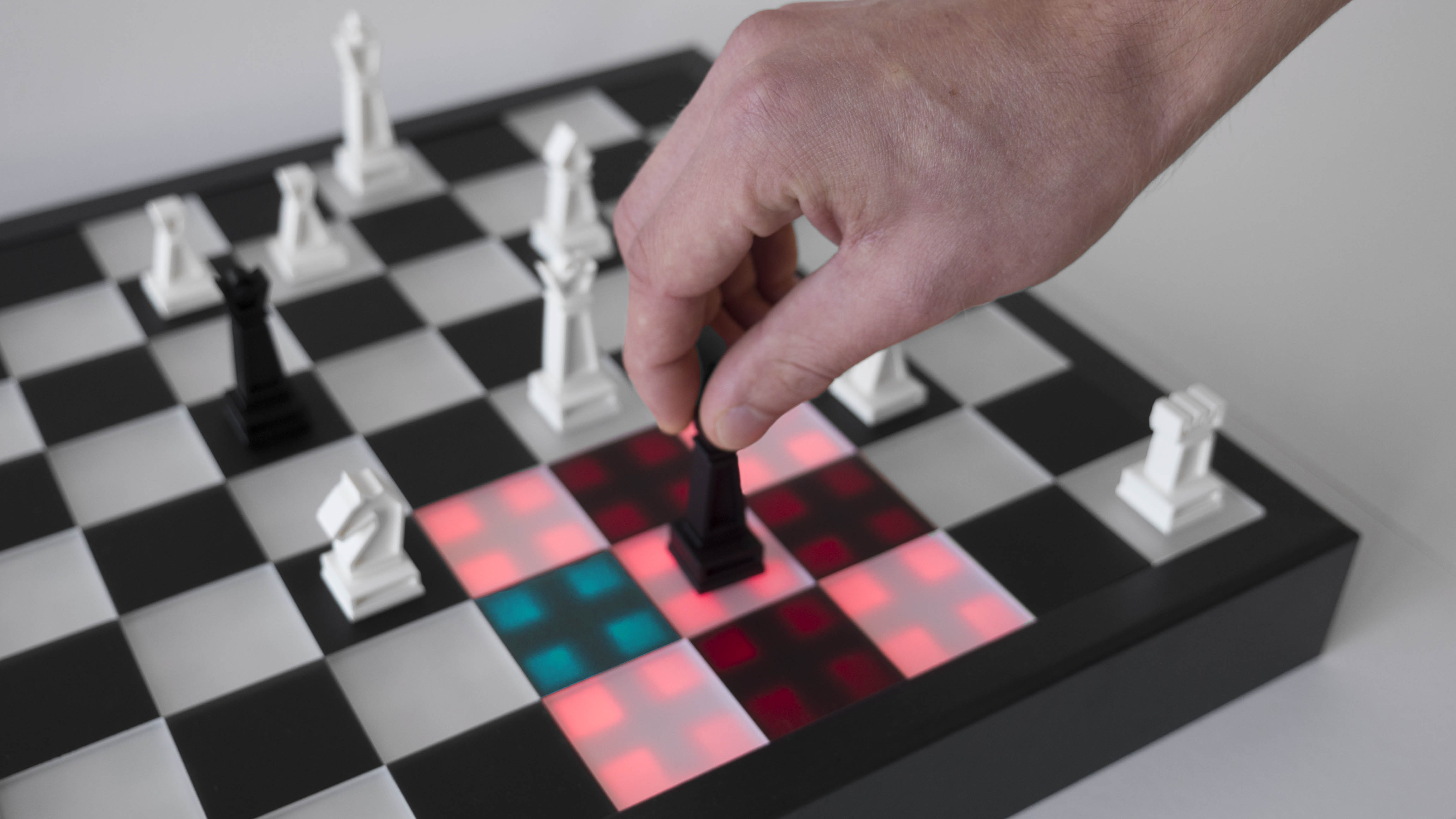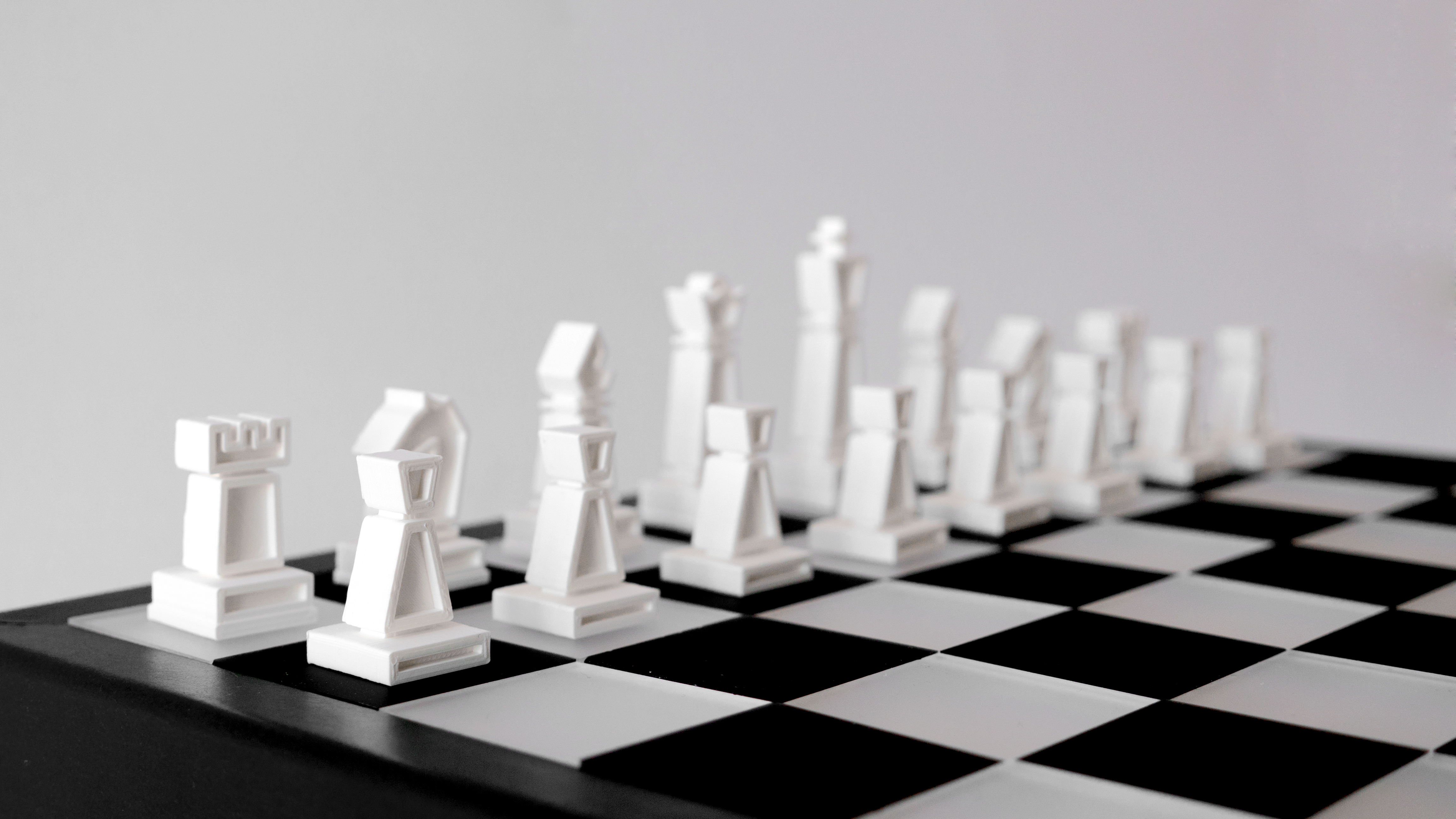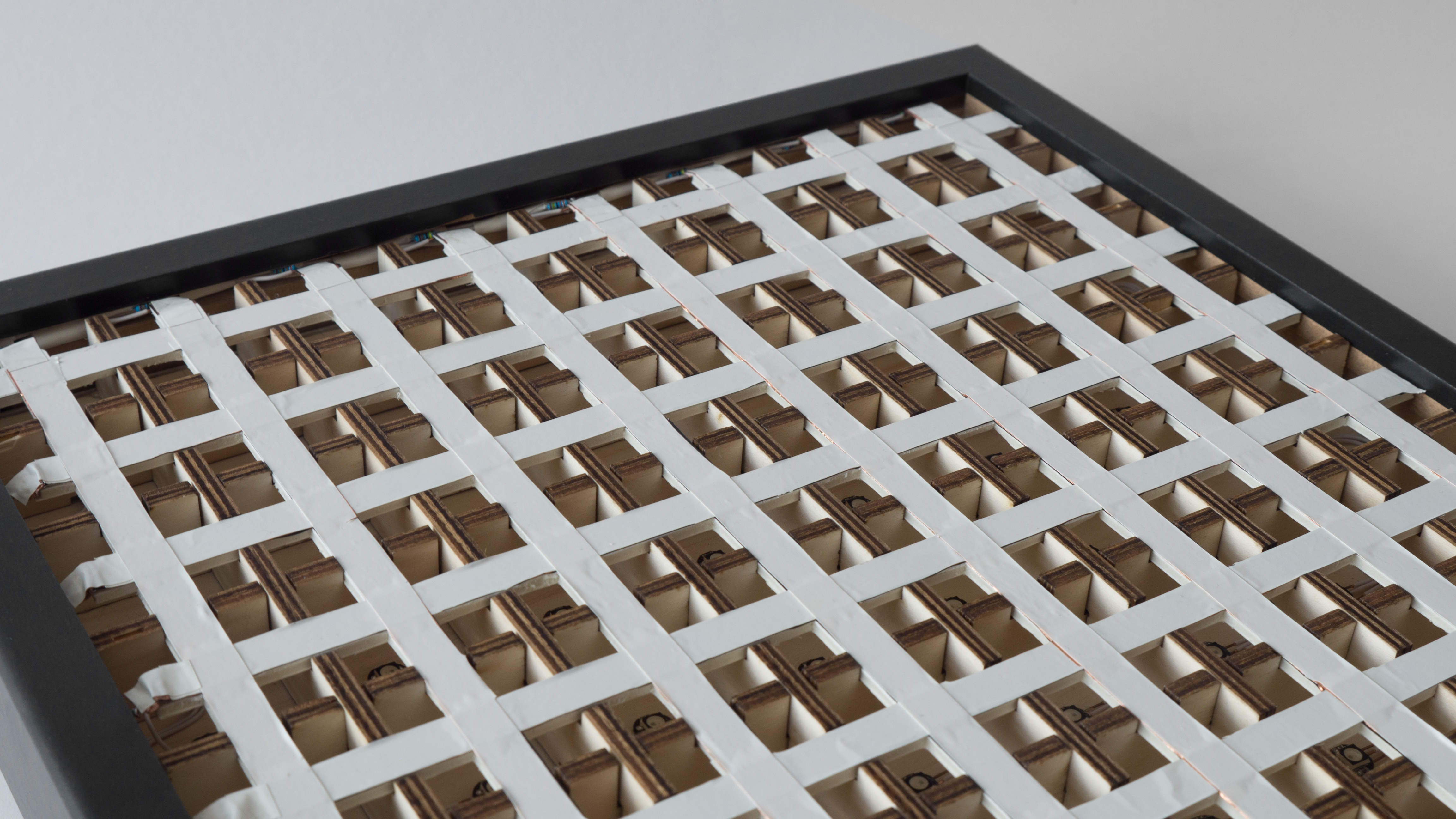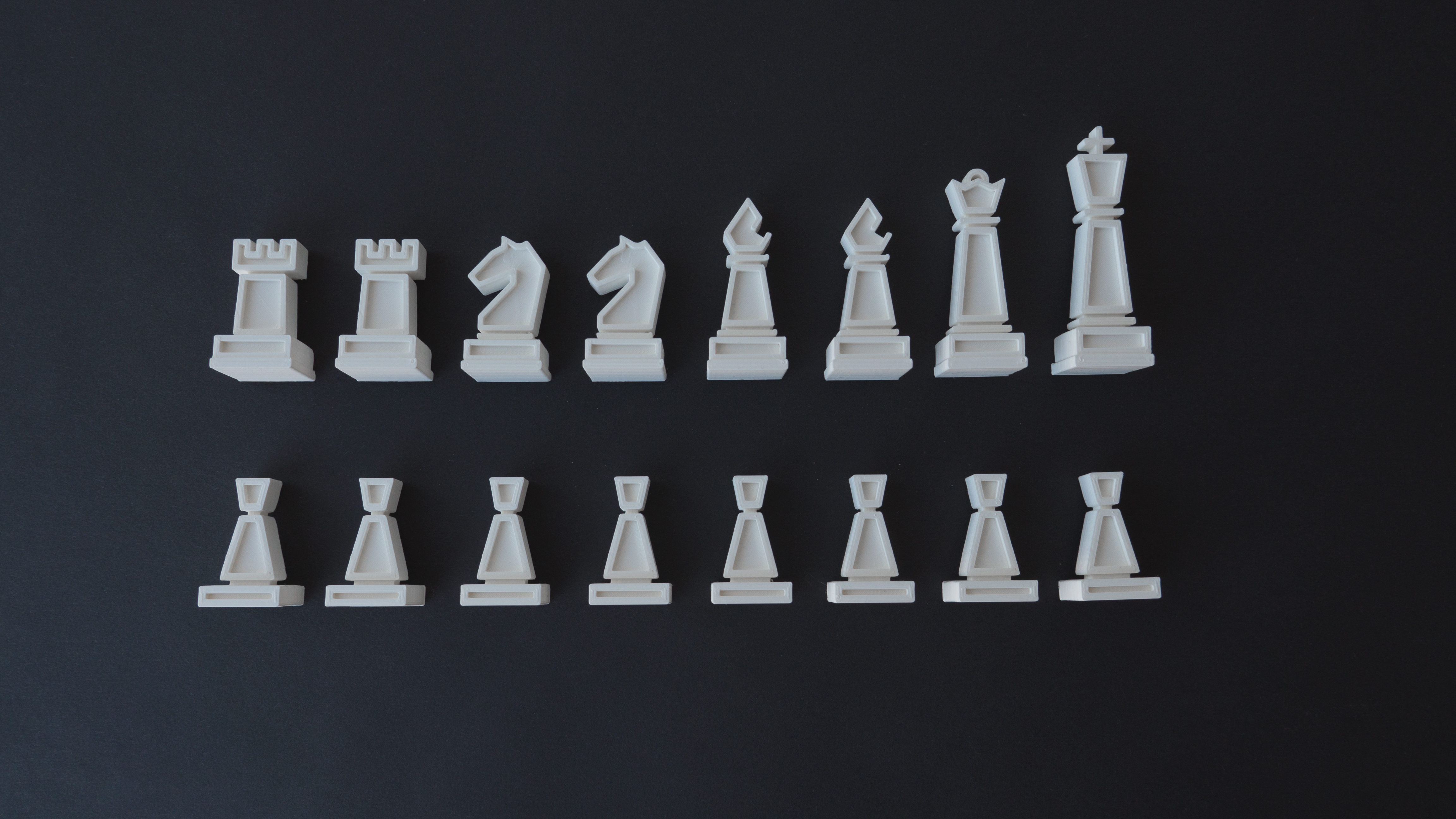
sense-chess
solves the problem of conventional chess being unenjoyable when players of different skill levels compete against each other. Through the intuitive interaction of merely touching a chess piece, the player can get helping information through fields lighting up and indicating possible moves, good moves or better choices in figures. While sensing the touch and movement, we can later analyse it with intelligent software and provide further information on the gameplay in an app, which even helps improve advanced player's gameplay.
Team
Jan Schneider
Marcus Schoch
Course
Prototyping - Redesign
at HfG Schwäbisch Gmünd
by Prof. Michael Schuster and Benjamin Thomsen
Date
summer semester 2018
Interaction
To make it accessible even for the most inexperienced player, the physical board has in it's basic
form just one touchpoint which are the chess pieces.
Depending on how long you hold on to one figure, multiple steps of guidance show up on the board.
First it shows all the possible moves you can do with this figure.
After that you get a suggestion on where to put your figure.
If you're still holding on and hold back on you're move, a field under a figure which suits your
current gameplay best, lights up.
Ultimately the best move is shown to you.

Look and Feel
The physical components are designed to be as close as possible to the original, understanable and destinguishable for better transferability between this game and any other the user might got in touch with or will in the future. Still we managed to shape the board and chess pieces in a modern, clean and elegant fashion.


Structure
Building the chessboard with the goal of keeping it small and maintaining a good form design was challenging. With planning ahead we still managed to fit everything, including arduinos and enough space for the LEDs to stray their light, in a convenient size.

Sensing
The sensing of a touch to a figure works with a 8x8 grid of home build capacititve sensors out of a thin strip of copper foil under the field, read by an Arduino Mega. Furthermore the figures need to be conductive to reduce the gap between sensor and the bodys capacity to just the height of the acrylic glass. That's why we printed them with conductive PLA.

Communication
We split information processing in various parts of the project because of faster prototyping and library usage. In Terms of reliability we went with a communication via USB between the Arduino and the server, which is locally executed to not be reliant on any network while prototyping or testing in any situation. Processing is used to send and receive signals from the Arduino and reading or writing in the databases, which were mandatory as they were a content in this lecture. The chess logic itself is a library running in JavaScript including chess AI and chess rules on our NodeJS server.

Chess pieces
The transferability of the chess pieces for beginners is very important to ensure they're learning to play the game not only on this board. We designed them in a clean and elegant way, matching to the design of our chess board, but they still have all the characteristics of classic chess pieces.

You can download the documentation for further information or view the code and chess pieces design on github.